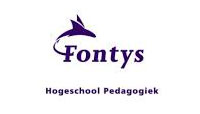Uit het onderzoek komt naar voren dat ouders van verschillende schooltypen verschillende manieren van communicatie waarderen en nodig hebben. Hieronder staan resultaten uit het vragenlijstonderzoek onder 306 ouders met betrekking tot communcatie tussen leerkrachten en ouders. (lees hier het volledige artikel)
Communicating
Table 2 shows that the most important source of information for all parents is e-mail (65%), followed by the parent-teacher meetings (61%), flexible meetings whenever they are needed (52%), and paper information letters (44%). Hardly any parent prefers communication via Facebook (3%), coffee mornings (5%), home visits (6%), or walk in moments before school starts (8%). Almost all parents believe that the information in the school guide is clear enough. However, there are differences between schools. Parents from mainstream schools rank website communication, general information evenings, fixed yearly meetings, flexible meetings, theme meetings for parents and walk-in meetings after school a lot higher than parents from the other two types of schools. Parents from at risk and special education schools score higher than parents from mainstream schools that they value receiving a paper information letter. At risk schools score extremely low in the preference for e-mails, and higher in their preference for paper letters and coffee mornings, compared with the other two school types.
Table 2 – Descriptive statistics questionnaire items on communicating
|
|
at-risk schools |
mainstream primary schools |
Special education schools |
Sign dif betw at-risk and mainstream
|
Sign dif betw at-risk and special education |
Sign dif betw mainstream and special education |
||||||
|
|
n |
Mean |
st.dev |
n |
Mean |
st.dev |
n |
Mean |
st.dev |
|||
|
How preferably informed by school? |
|
|
|
|||||||||
|
Digital: website |
111 |
0.15 |
0.36 |
123 |
0.41 |
0.49 |
81 |
0.22 |
0.42 |
Yes |
No |
Yes |
|
Digital: e-mail |
111 |
0.37 |
0.48 |
123 |
0.84 |
0.37 |
81 |
0.77 |
0.43 |
Yes |
Yes |
No |
|
Digital: Facebook |
111 |
0.03 |
0.16 |
123 |
0.01 |
0.09 |
81 |
0.09 |
0.28 |
No |
No |
Yes |
|
On paper: e.g newsletters |
111 |
0.58 |
0.50 |
123 |
0.27 |
0.44 |
81 |
0.51 |
0.50 |
Yes |
No |
Yes |
|
General parent information evenings |
111 |
0.21 |
0.41 |
123 |
0.37 |
0.48 |
81 |
0.20 |
0.40 |
No |
No |
No |
|
Fixed yearly moments for parent teacher meetings |
111 |
0.53 |
0.50 |
123 |
0.73 |
0.44 |
81 |
0.54 |
0.50 |
Yes |
No |
No |
|
Coffee mornings for parents |
111 |
0.08 |
0.27 |
123 |
0.02 |
0.15 |
81 |
0.04 |
0.19 |
Yes |
No |
No |
|
Theme meetings |
111 |
0.15 |
0.36 |
123 |
0.32 |
0.47 |
81 |
0.11 |
0.32 |
No |
No |
No |
|
Flexible meetings when needed |
111 |
0.42 |
0.50 |
123 |
0.62 |
0.49 |
81 |
0.49 |
0.50 |
No |
No |
No |
|
Teacher visiting at home |
111 |
0.04 |
0.19 |
123 |
0.05 |
0.22 |
81 |
0.10 |
0.30 |
No |
Yes |
No |
|
Walk-in 15 minutes before school starts |
111 |
0.10 |
0.30 |
123 |
0.10 |
0.30 |
81 |
0.02 |
0.16 |
No |
Yes |
Yes |
|
Walk-in 15 minutes after school ends |
111 |
0.12 |
0.32 |
123 |
0.19 |
0.39 |
81 |
0.09 |
0.28 |
No |
No |
No |
|
Text in school guide clear enough? |
111 |
0.91 |
0.29 |
121 |
0.87 |
0.34 |
82 |
0.98 |
0.16 |
No |
No |
Yes |
|
Teachers use understandable language to communicate with parents |
110 |
0.55 |
0.50 |
124 |
0.62 |
0.49 |
82 |
0.67 |
0.47 |
No |
No |
No |
- Significant differences from multinomial logit regression at the 5%-level. All variables considered at the same time in one regression.
The second half (vertically seen) of Table 2 shows which of these differences are significant in the regression analysis. The analysis shows that mainstream parents significantly more often prefer communication via the website, while at-risk and special education parents prefer communication via e-mail. Special education also prefer e-mail more than at-risk schools, and Facebook more than mainstream schools. At-risk school parents prefer fixed yearly parent teacher meetings significantly less than mainstream schools, but prefer coffee mornings significantly more. On the other hand, special education parents prefer home visits significantly more than at-risk parents. Walk in moments before the school starts are preferred significantly more by at-risk and mainstream parents, compared with special education. Lastly, special education parents find the text in the school guide significantly more often clear enough than mainstream parents.

